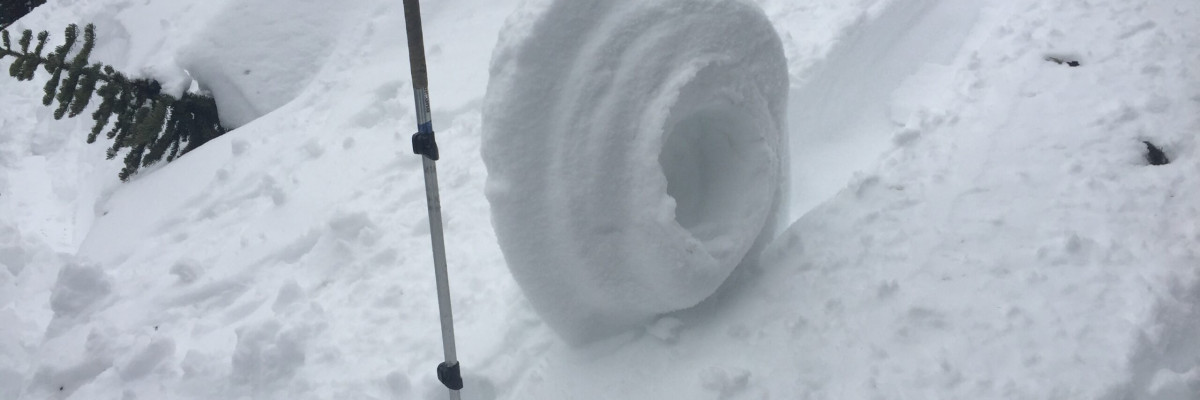Good morning, this is Travis Craft with the West Central Montana Avalanche Center’s early season update for November 21, 2017.
Mountain temperatures range from 26 F to 32 F in the region. Winds are 8 mph with gusts of 10 mph out of the SSW in the Bitterroot. Point Six, in the northern part of the advisory area, winds are reading 9 mph with gusts of 12 mph out of the SSW. The region has picked up 4 to 10 new inches of snow in the last 24 hours. The new snow had SWE’s ranging from .3 to 1.4 inches of water.
Josh and I toured in the Rattlesnake on Sunday before this storm entered our advisory area. We found wind slabs. We were able to get the facets under the Halloween crust to propagate in ECT’s.
Warming temperatures and rising freezing levels will increase the avalanche danger. Rain on snow will increase the Avalanche Danger. Natural avalanche activity will increase with the current and predicted weather.
The primary avalanche problem is storms slabs. The area received significant new snow. Monitor how well the new snow is bonding to older surfaces and avoid wind loaded slopes.
The second concern is persistent slabs. The layer of facets under the Halloween crust will be more reactive with new loading and rain added to the snowpack. You can reduce your risk by traveling on lower angled terrain.
The third avalanche problem will be loose wet releases. With rising temperatures and rain on our dry snowpack, loose wet releases will be triggered naturally and have the potential to become quite large. Pay attention to slopes above you.
With the current weather and predicted weather, the avalanche danger can change quickly.
Across western Montana, there are backcountry locations that experienced wildfires during the 2017 season. Temporary emergency trail closures for the Lolo Peak (from the Mormon Ridge trailhead), Mill Creek and the Lantern Ridge trails. These burned areas, while sometimes opening up new skiable terrain, may also present hazards for backcountry skiers. Trees burned may have weakened or completely burned root systems. They could fall without warning – even in no wind conditions. Trees and other vegetation that may have anchored snow on steeper slopes in past years may now be completely burned. Downed trees from a fire can create unseen hazards on shallow snowpacks.
As always, be observant of conditions – not just the snowpack, but also what is above the snow when moving through a recently burned area, especially in strong and gusty winds.
If you see any of these obvious clues (listed below) signaling dangerous snow conditions, avoid being on or under open slopes steeper than 30 degrees.
Recent avalanche activity
Cracking or collapsing snowpack
Heavy snowfall
High winds
Rapid increase in temperature
If you spend any amount of time in the mountains in the winter, chances are good that you will encounter avalanche terrain. Having basic awareness of terrain, weather and snow factors goes a long way toward making good decisions in avalanche terrain. To assist you, we are offering several basic and advanced avalanche awareness classes this winter. We also have instructors available to provide your organization a range of programs from introductory lectures to classes with a field component.
Any information you can provide and send the WCMAC is appreciated and helps us inform the rest of the community about avalanche safety conditions. Please send a quick email to [email protected] or complete the form here public observation.
We will update the advisory as the weather dictates and plan to begin issuing regular avalanche advisories with a danger rating in mid-December.
















